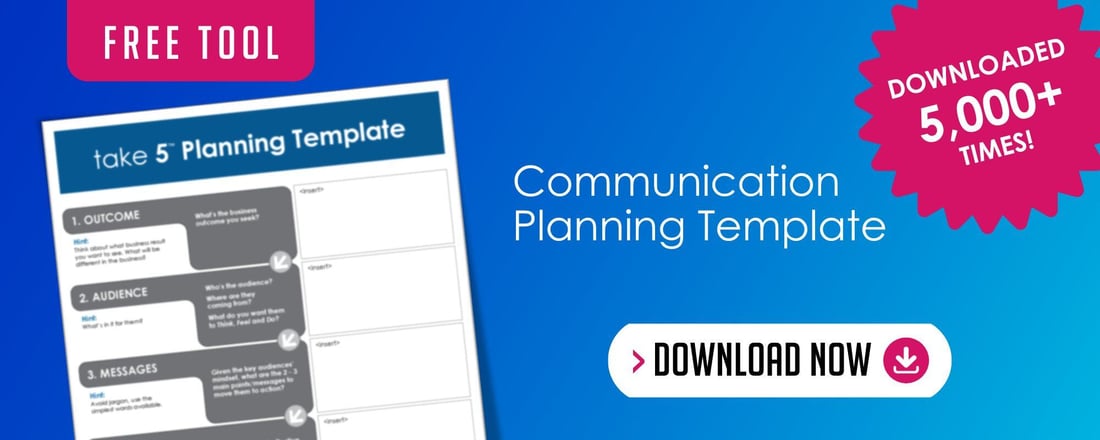How to Effectively Plan Your Next Communication in 5 Minutes

What comes to your mind when you think about the world’s great leaders? Often, it’s how they inspired people or organizations to achieve greatness. Or a stirring speech that delivered a compelling message. The fact is, most great leaders are also great communicators.
In organizations, the best leadercommunicators bring their vision to life in a way that connects employee needs to company priorities and business goals. They not only plan how they’ll communicate, but also ensure they are delivering a strategic message that will inspire employees to positive action.
A Methodical Approach to Core Message Development
I remember one time, as the director of communications at McDonald’s, when I was sitting in a “war room” with external communications peers and various leaders. We were planning communications for an issue that was then affecting the Golden Arches. We talked about the situation, discussed the facts, weighed options, and mapped the messages and communication approach so that when we left the room a few hours later, each leader could go on and deliver their piece of the plan.
Building on that experience and our work with a number of clients, I created a tool that’s evolved over our past 20 years in business – our messagemap™ methodology. It’s a strategic, methodical approach to developing a core message platform that can be delivered in a clear, credible, consistent way.
Every message platform starts with a main message – or elevator speech – that’s supported by additional messages, data, and stories for consistent communication across various channels. The main message provides a brief snapshot of the topic and what’s happening in language that is easily remembered and repeated. Ideally, it will leave your audience saying, “tell me more,” to open the door for more detailed information.
Take 5 Minutes to Develop Your Daily Communication
Strategic message development can really pay off in consistent communication when it matters most. It can also apply to daily communication if you take just five minutes to think through the following as you address your next communication challenge:
- Outcome – What do you want to accomplish at the highest level? What’s the business outcome you seek? Define it as specifically as you can.
- Audience – Are you communicating to an individual or group? What is your relationship? What perspective might they have, and what information do they need? The more you know, the better you are able to influence the audience. In the end, what do you want them to do?
- Messages – Think about the “who, what, when, where, why, and how” of what you are communicating. Adult learners want to know the “what” first and then the “why.” Be sure to explain your intention and be direct in a caring way, especially when addressing difficult issues.
- Tactics – Is the message best delivered face-to-face, one-on-one, through e-mail or other communication? Consider the limitations and possible impact of each option.
- Measurement – How will you evaluate how well your message is being received? Body language or verbal response? Other feedback mechanisms? One way is by analyzing questions employees ask—if they are looking forward and asking how a new situation might work, your message is getting through. If they are challenging your assumptions or want to take a step back, you could do a better job communicating.
A methodical approach to planning strategic messages ensures that leaders at all levels are aligned and speaking consistently with one voice. It also is the basis for customized, consistent communications to reach key audiences.
How can you use this method to achieve the business results you want?
—David Grossman
Being more purposeful in your communications can take as little as five minutes. Map out your communication, whether it's to one person, a group or an organization. Click the image below to download your free tool—Take 5™ Planning Template.


Comments on this post